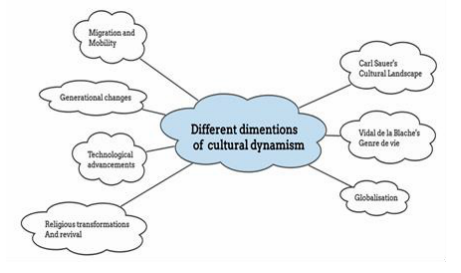
Culture, often described as a dynamic concept, embodies the ever-evolving tapestry of beliefs, values, customs, and behaviors that shape the identity of a society. Unlike a static entity, culture undergoes constant transformation, influenced by external forces, technological advancements, globalization, and societal shifts. This dynamism is evident in the way people adapt, create, and reinterpret cultural elements over time. To illustrate, consider the evolution of language—new words emerge, meanings shift, and expressions evolve, reflecting the dynamic nature of communication within a culture. Furthermore, the fusion of traditional and contemporary influences in art, music, and fashion showcases how culture is not a rigid framework but a fluid, responsive entity that mirrors the ongoing evolution of human societies. In essence, the dynamism of culture is a testament to its resilience and ability to adapt, ensuring its relevance in an ever-changing world.
Contents
Answer
Culture encompasses the shared beliefs, Customs, traditions, and values of a group of people. The concept of culture is thus dynamic, evolving Constantly and adapting to changing circumstances.
Dynamism of culture: Testaments

Carl Sauer’s “Cultural landscape” and cultural dynamism
He demonstrated how humans shape up the landscape from the natural landscape to cultural landscapes, He argued that cultures are not static but very dynamic, and share dialectic relationships with the environment, culture influences the environment and in turn, is influenced by it.
Vidal de la Blache’s “Genre de vie” or way of life
- The concept acknowledges that culture is not static but flexible and adaptable in response to changing surroundings.


Globalisation and cultural dynamism
- Globalisation led to intermingling and exposure to different cultures resulting in dynamism. For eg. the fusion of culinary traditions from different parts of the world, Sushi burritos (a combination of Japanese and Mexican cuisines).
Migration, mobility and cultural dynamism
- Immigrants often bring their cultural practices and traditions” Diaspora tendencies” to destination countries, over time, these traditions blend with the local culture, resulting in unique cultural expressions.
- Celebration of Cinco de Mayo in the United States, influenced by Mexican heritage.
Generational changes
- Generational shifts can lead to changes in cultural norms and values.
- Attitudes toward gender roles and LGBTQ+ rights have evolved.
Significantly over the past few decades.
Technological advancements
- Scientific discoveries and advancements, such as breakthroughs in genetics or medicine,can reshape cultural attitudes
- Eg. Rising accommodative attitude towards cloning, organ transplantation, or genetic engineering.
Religious Transformations and Revivals
- Religious cultures can experience shifts, including revivals or reformations that lead to changes in religious practices, beliefs, and rituals.
- Eg. Ban on the inhuman practice of sati in India after nineteenth-century socio- cultural movements.
Thus culture is very much dynamic and it keeps on evolving and adapting to the requirements of changing times and cultural landscapes.
In case you still have your doubts, contact us on 9811333901.
For UPSC Prelims Resources, Click here
For Daily Updates and Study Material:
Join our Telegram Channel – Edukemy for IAS
- 1. Learn through Videos – here
- 2. Be Exam Ready by Practicing Daily MCQs – here
- 3. Daily Newsletter – Get all your Current Affairs Covered – here
- 4. Mains Answer Writing Practice – here

